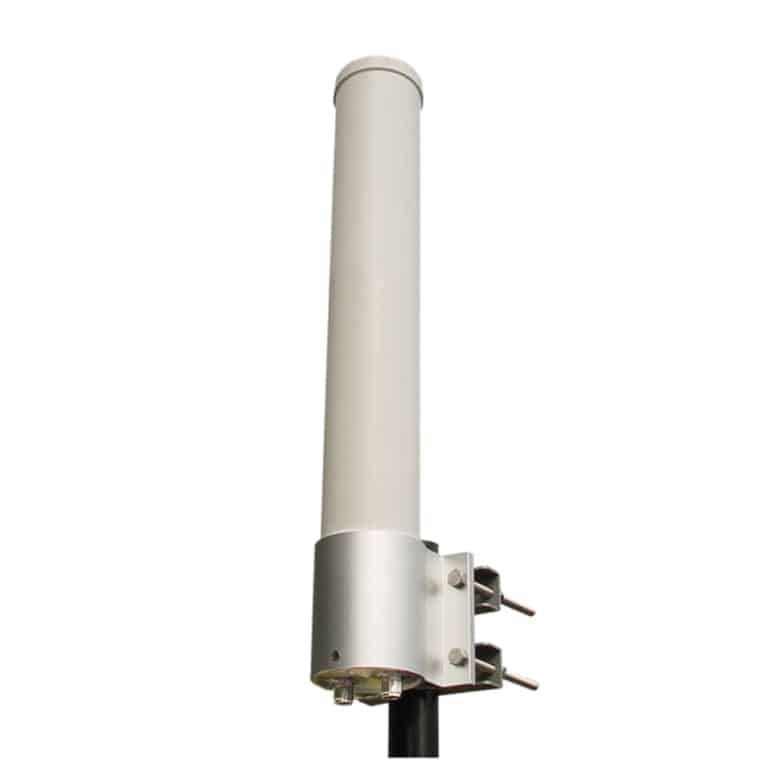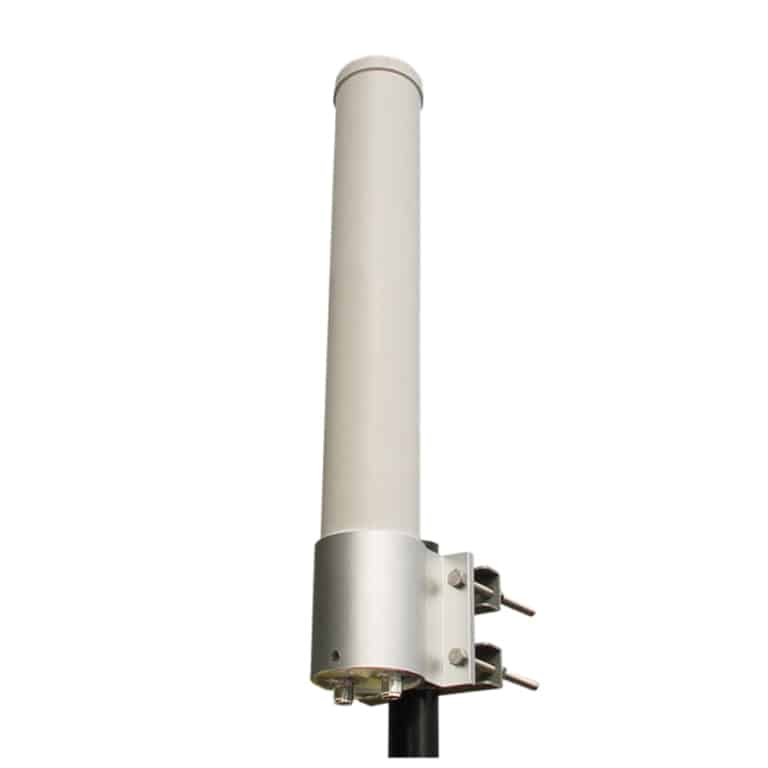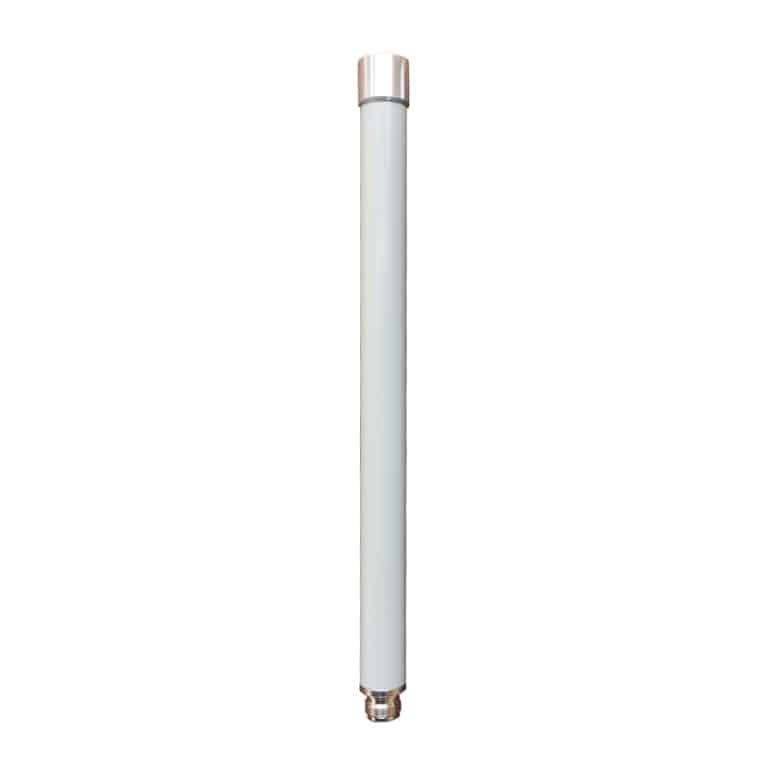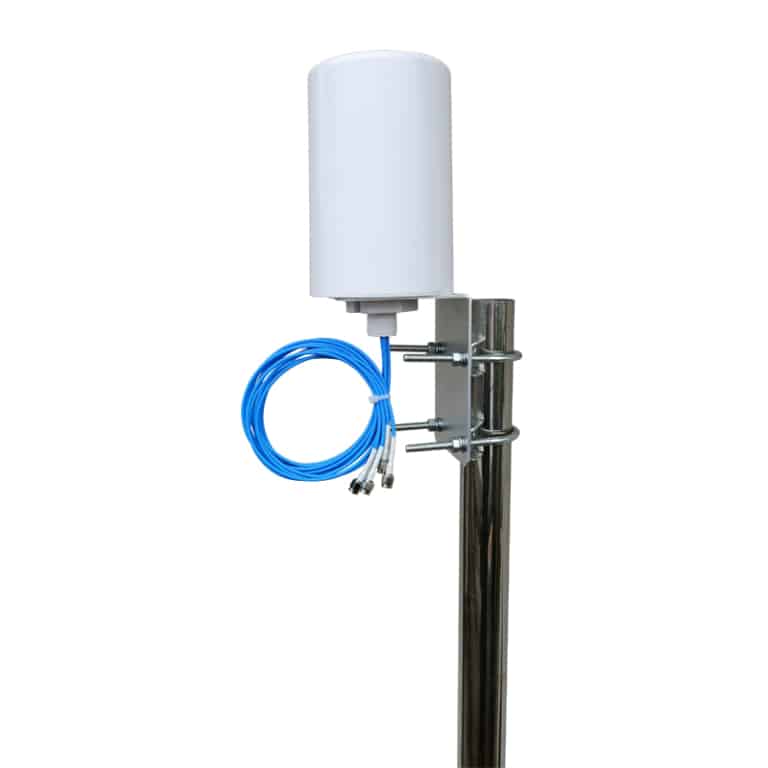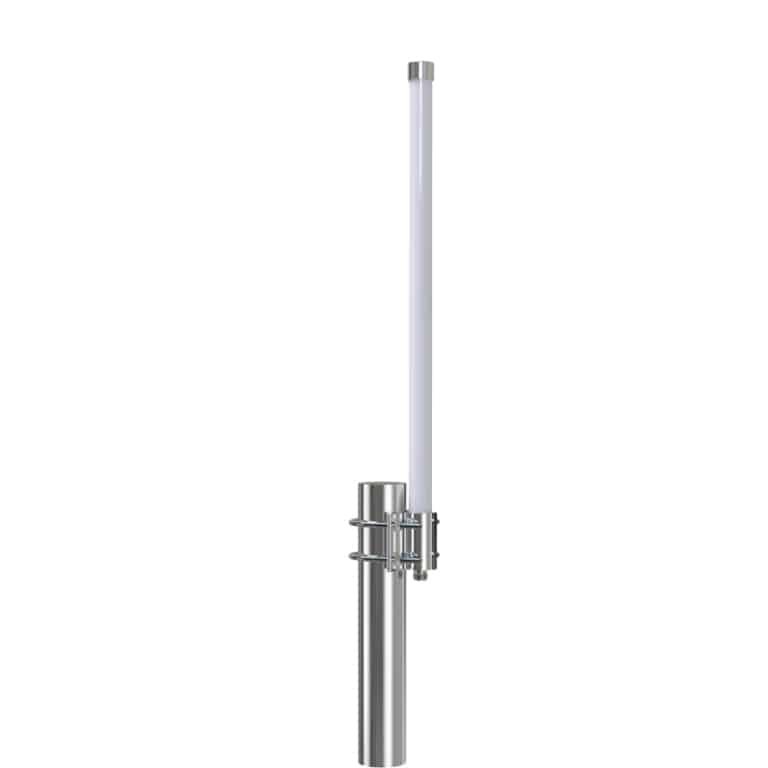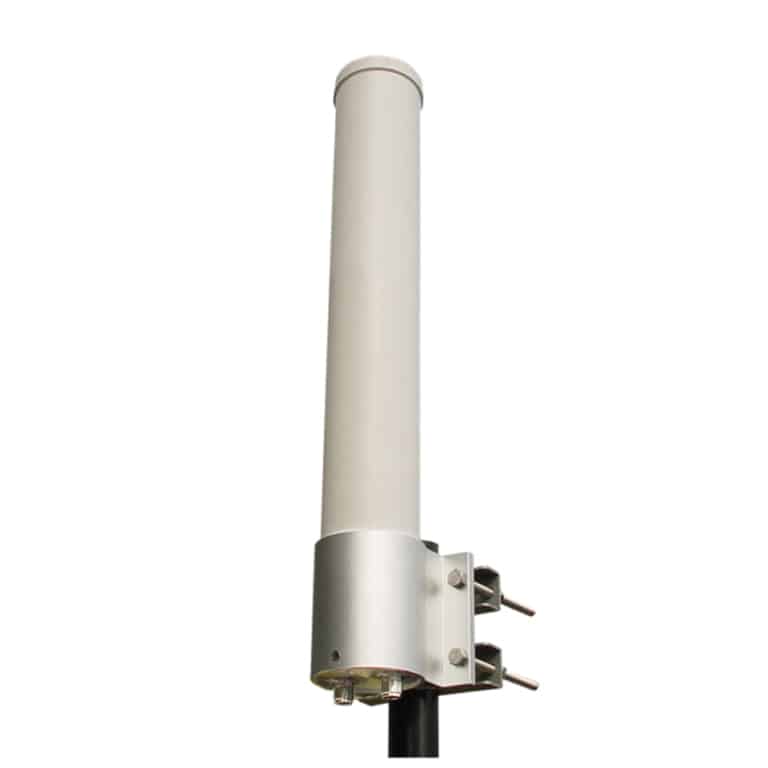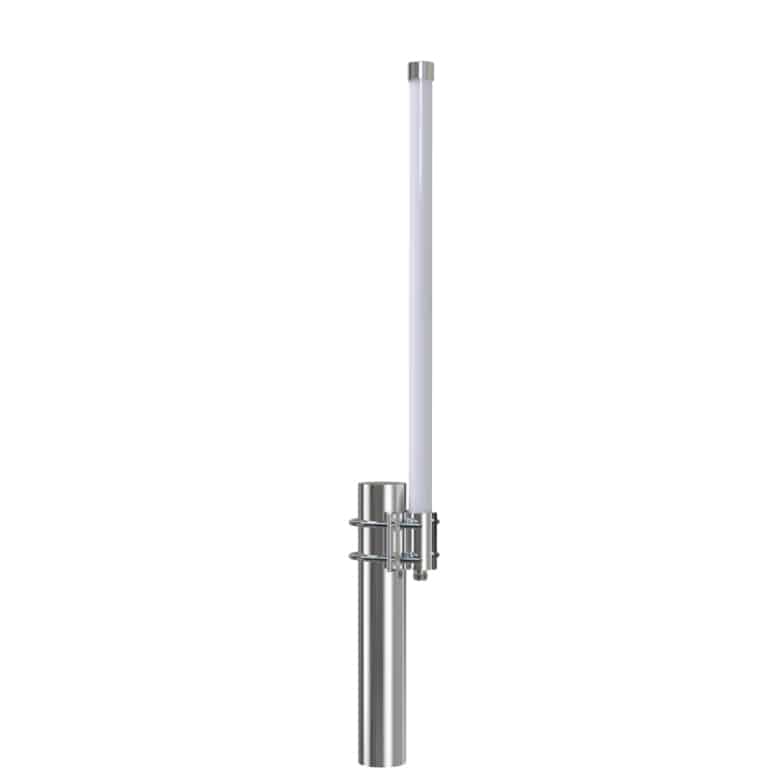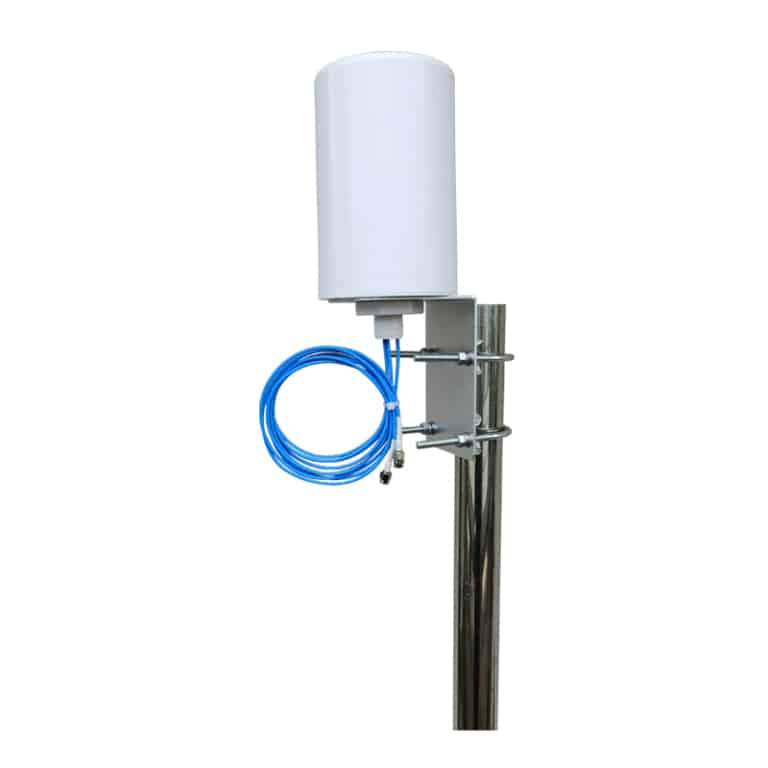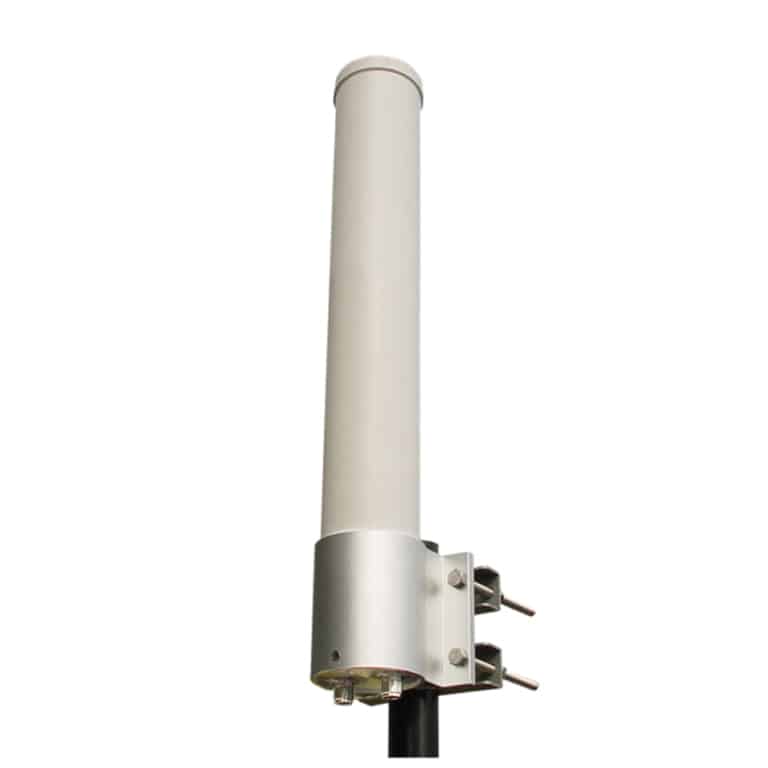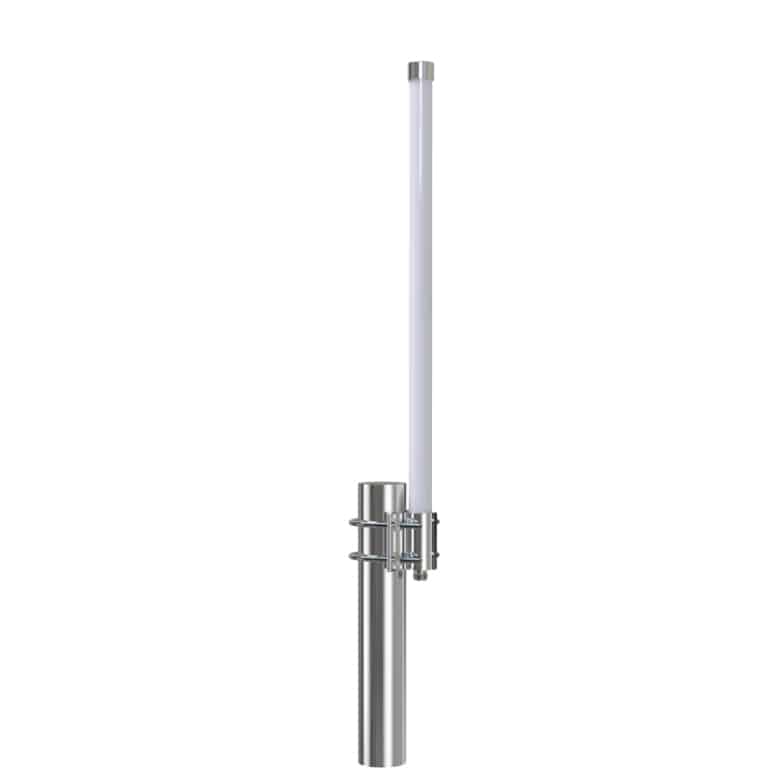In today’s fast moving digital world, connectivity is one of the key factors, and having a reliable outdoor antenna can significantly enhance your WiFi network. Outdoor omnidirectional WiFi antennas are specially designed to provide consistent WiFi coverage over large areas. Known for their durability, these antennas ensure steady internet access across diverse environments. Whether you’re setting up WiFi in a park, a university, outdoor office, public hotspot or even a marina, these antennas are important to a seamless online experience.
The Roles and Importance
Outdoor omnidirectional WiFi antennas play a crucial role in expanding network reach and reliability. Their ability to broadcast signals in all directions makes them ideal for outdoor spaces where users are spread out. As more devices connect to networks for work, leisure, and communication, the demand for effective coverage increases. The right antenna ensures that everyone connected to the network enjoys a reliable connection.
What is an Outdoor Omnidirectional WiFi Antenna?
The main purpose of an outdoor omnidirectional antenna is to transmit and receive WiFi signals evenly in all directions in a single plane, maximizing coverage and ensuring consistent access for all connected devices.
These antennas utilize durable fiberglass housing, which makes them resistant to environmental challenges such as harsh weather conditions. The design focuses on longevity and performance, ensuring that the signal stays strong and reliable.
Outdoor omnidirectional antennas are used in various applications, like public areas, large offices, and industrial complexes. They are versatile, fitting perfectly into environments where wide area coverage is needed without the hassle of installing multiple antennas.
Operating primarily in the 2.4 GHz 5 GHz and more recently 6 GHz, these antennas offer optimal performance over a substantial range, providing effective coverage for vast outdoor spaces.
Key advantages include wide coverage, simplicity of installation, and adaptability to different settings. The robust construction ensures durability, making them a cost-effective choice for long-term use.
How Do WiFi Omni-directional Antennas Work?
Omnidirectional WiFi antennas work by emitting signals uniformly across 360 degrees, creating a zone that radiates outward using multiple elements or dipoles. This configuration is perfect for environments requiring comprehensive signal access without the complexity of directional targeting. The elements are usually phased in a way that the signals they generate reinforce each other in the needed direction. This will help the antenna’s gain and efficiency.
This feature allows them to support numerous connections, maintaining signal integrity over wide areas, which is an essential characteristic of outdoor environments.
Benefits of Using Omnidirectional Antennas
Wide Coverage
One of the most important advantages of omnidirectional antennas is their ability to provide coverage over a large area. These antennas emit signals in all directions, forming a circular radiation pattern that goes equally in a 360-degree radius. This makes them ideal for open environments, where a wide-reaching signal is important to ensure connectivity across a broad range. In outdoor spaces like parks, campuses, and festivals, users can move freely within the antenna’s range while maintaining a good connection.
Enhanced Connectivity
Omnidirectional antennas are designed to handle multiple simultaneous connections. By providing a consistent and stable signal over a wide area, these antennas support numerous devices, making them highly suitable for environments with high user density. In places such as college campuses, outdoor event venues, or large business parks, multiple users can access the network without significant drops in speed. This feature is particularly useful for public and commercial spaces where internet access is essential for day-to-day operations.
Ease of Installation
Setting up an omnidirectional antenna is straightforward, requiring minimal technical expertise. These antennas are designed for easy installation, involving just a few steps such as mounting the antenna on a pole or structure and connecting it to the network. There is no need to aim the antenna. Their plug-and-play nature ensures that they can be deployed quickly and efficiently, reducing the need for specialized equipment or trained personnel. Ease of installation in this kind of antennas, makes them accessible to a wide range of users, from professional network administrators to individuals looking to extend their home WiFi outdoors.
Cost-Effective
Omnidirectional antennas offer a budget-friendly solution for large-area coverage. Instead of deploying multiple directional antennas to cover different sectors of an area, a single omnidirectional antenna can often be enough, reducing the initial investment and maintenance costs. For organizations operating in parks, campuses, or industrial settings, this cost-effectiveness translates into significant savings. Moreover, with fewer devices required for the same coverage area, there are fewer points of failure, which can lead to lower maintenance costs in the long run.
Adaptability
Omnidirectional antennas are adaptable and capable of functioning effectively in a variety of outdoor environments. Whether they are installed in parks, in industrial zones, or at outdoor events, they are designed to withstand different environmental conditions. This adaptability ensures that the antenna can continue to provide reliable service even in any surrounding conditions.
Durability
Built with durable materials, like fiberglass housing, omnidirectional antennas are constructed to bear the challenges of outdoor environments. They are designed to resist harsh weather conditions, including rain, snow, wind, and extreme temperatures. This design ensures that the antenna remains functional even in challenging conditions.
By choosing omnidirectional antennas, you can establish a reliable network capable of supporting a wide range of users without the need for complex installation procedures. Their adaptability ensures that as network demands change, the antenna can continue to provide effective service.
Applications in Various Sectors
- Public Parks and Recreational Areas
In public parks and recreational areas, omnidirectional WiFi antennas provide consistent internet access to visitors. Whether it’s providing connectivity for casual users browsing social media or supporting virtual tours for tourists, these antennas enhance the overall visitor experience. Parks equipped with robust WiFi services can also host digital events, and promote eco-tourism.
- College and University Campuses
Omnidirectional antennas are important for providing campus-wide connectivity in educational institutions. Usually, students and staff rely on consistent internet access for academic research, communication, and administrative tasks. These antennas can be installed in open spaces like sports fields, ensuring that students can stay connected even outside traditional classroom environments. By offering reliable WiFi access across vast areas, colleges and universities enhance the academic experience and ensure that learning can happen anywhere on campus.
- Industrial Complexes and Business Parks
In industrial complexes and business parks, where large areas require stable and widespread network coverage, omnidirectional antennas support smooth network access. Reliable WiFi helps maintain efficient workflows, monitor production lines, and control security systems across industrial zones. These antennas are also valuable for remote workers, providing uninterrupted connectivity for tasks such as real-time monitoring, inventory management, and equipment monitoring.
- Outdoor Events and Festivals
For outdoor events, festivals, and concerts that draw large crowds, omnidirectional antennas ensure that attendees have access to WiFi throughout the venue. This connectivity is vital for event organizers who rely on internet access for ticketing, payments, live streaming, and customer engagement. Stable WiFi enhances the attendee experience, allowing people to share their event experiences online in real-time, which further helps to promote the event.
- Hotels and Resorts
In the hospitality industry, providing fast and reliable WiFi is a top priority for guest satisfaction. Omnidirectional antennas installed in outdoor spaces like pool areas, gardens, and terraces which extend the hotel’s connectivity, ensuring that guests can stay connected even when enjoying outdoor activities. This improves customer satisfaction, leading to better reviews and repeat business.
Moreover, outdoor WiFi allows hotels and resorts to integrate entertainment services such as outdoor movie screenings, music streaming, and more.
- Marinas and Waterfronts
Marinas and waterfronts benefit significantly from omnidirectional antennas, as they provide essential internet access to boaters and visitors. This connectivity supports navigation, communication, and entertainment for those on the water.
These applications demonstrate the importance of omnidirectional antennas in enhancing connectivity in both public and private sectors. By offering reliable coverage across large outdoor areas, these antennas support a wide range of technological needs and improve the overall user experience in various settings.
Key Technological Specifications
- Frequency range: Typically available in 2.4 GHz, 5 GHz, and 6 GHz bands, covering a wide spectrum that ensures compatibility with most WiFi devices.
- Antenna gain: The gain of omnidirectionaldetermines how well the antenna can transmit and receive signals over long distances. A higher gain provides better performance in open environments, improving overall network efficiency. Typically in the range of 6 to 14 dBi.
- Antenna polarization: Most omnidirectional antennas support vertical, horizontal, or slant and dual, enhancing data transmission rates and minimizing interference by allowing the antenna to receive signals from different angles.
- Radiation Pattern: The radiation pattern is omnidirectional, ensuring consistent signal coverage across all directions.
- Connectors: These antennas typically use N-type connectors, which are known for their durability and reliability. However, customizable options are available to meet specific installation requirements.
Understanding these technical specifications helps you to choose the right antenna model based on your unique network needs.
Installation Best Practices
Mounting Considerations: When installing an omnidirectional antenna, environmental factors such as height, and obstructions should be taken into account. Positioning the antenna at an elevated location helps to maximize coverage. It’s important to avoid mounting the antenna too close to metal structures or large buildings, as this can cause signal reflection, reducing the antenna’s performance.
Optimal Placement for Maximum Coverage: For optimal performance, the antenna should be placed in a central, elevated location that offers a clear line of sight to the areas it needs to cover. Conducting a site survey before installation helps identify any potential obstacles, such as trees, buildings, or other physical barriers that could interfere with the signal. Adjusting the antenna’s placement based on the results of the survey can significantly improve network reliability and coverage.
Disadvantages
While omnidirectional antennas offer many advantages, they also come with a few limitations. Let’s look into them in detail,
Limited Range: Although these antennas provide wide coverage, they may not penetrate obstacles like buildings as effectively as directional antennas. In environments where long-distance communication through walls or other obstructions is required, a directional antenna might be a better choice.
Potential Interference: Due to their wide broadcast range, omnidirectional antennas are more susceptible to interference from other devices operating on similar frequencies. This can lead to signal degradation, specially in areas with heavy WiFi traffic.
Less Focused Signal: Unlike directional antennas, which concentrate their signal in a specific direction, omnidirectional antennas spread their signal evenly in all directions. This broad coverage can reduce signal intensity over longer distances, particularly in environments with physical obstructions.
Signal Attenuation: Environmental factors such as trees, weather conditions, and topography can affect the strength and reliability of the signal emitted by omnidirectional antennas. In areas with significant environmental challenges, network planners may need to deploy additional technologies.
Understanding these disadvantages allows you to plan more effective layouts, or else incorporating additional equipment to enhance overall network performance.
How Far Will an Outdoor Omni WiFi Antenna Reach?
The range of an outdoor omnidirectional WiFi antenna depends on several factors, including its frequency band, power output, and environmental conditions. Typically, these antennas can cover distances ranging to hundreds of meters. In ideal conditions, with minimal interference and a clear line of sight, the range can extend even further, making them suitable for large open areas.
However, obstacles such as buildings, trees, and weather conditions can reduce the effective range, so it’s important to consider these factors during installation to optimize performance.
Omni WiFi Antenna vs. Directional WiFi Antenna, How to Choose?
When deciding between an omnidirectional and a directional WiFi antenna, the specific needs of your environment should be the primary consideration. Omnidirectional antennas provide broad, 360-degree coverage, making them ideal for environments where users are spread out in all directions, such as parks, campuses, or outdoor events. In contrast, directional antennas concentrate their signal in a specific direction, making them more efficient for long-distance communication.
For example, in a marina where boats are docked along a pier, a directional antenna aimed along the pier might be more effective. On the other hand, in a public park with dispersed users, an omnidirectional antenna would ensure that everyone has access to the network.
Conclusion
An outdoor omnidirectional WiFi antenna is an essential tool for establishing expansive, reliable WiFi networks in outdoor settings. These antennas offer wide-ranging coverage, making them suitable for various applications, including public parks, university campuses, industrial complexes, and outdoor events. Their adaptability to different environments, ease of installation and cost-effectiveness, makes them a practical solution for administrators looking to extend their wireless networks.
When planning a network setup, it is crucial to consider the specific requirements of your environment. Whether you are ensuring connectivity for a large-scale event, providing reliable WiFi access across a business park, choosing the right outdoor antenna can make a significant difference in the performance and reliability of your network.
By understanding the strengths and limitations of omnidirectional antennas, you can design and implement WiFi systems that deliver the best performance while meeting the needs of a maximum number of users.

